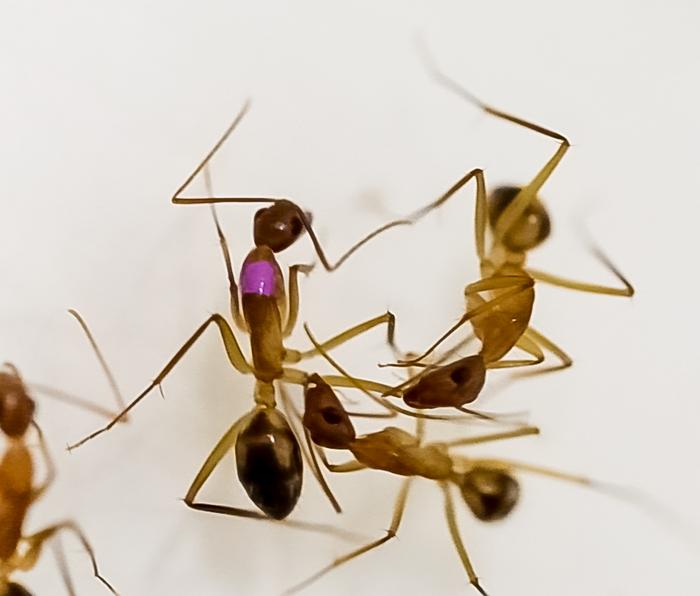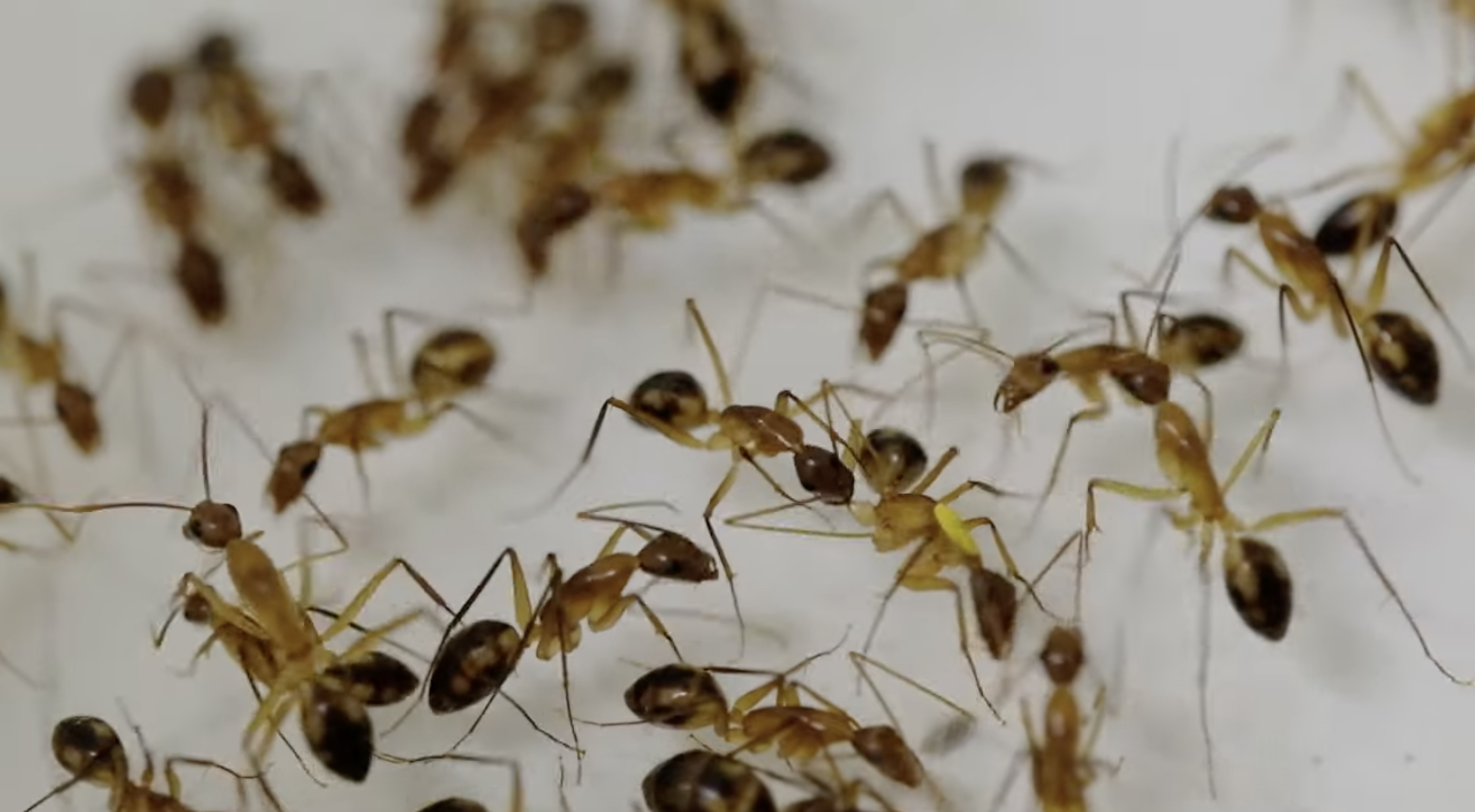It's a normal afternoon at Seattle Grace Hospital and a patient has come into the ER with a leg injury. It's an open wound, and the ER doctors can already see it's infected. If the injury were less severe, perhaps lower down the leg, they might clean it and apply some topical care. But the wound is right on the thigh, or femur, which unfortunately means one thing: amputation. The patient heads into the operating room and presents her leg to the doctor, who begins licking the wound. The patient stays awake for the procedure, in which the doctor uses her mouthparts to repeatedly bite the patient's leg right at the joint until the whole thing comes off, while "How To Save A Life" plays from unseen speakers. And a few rooms away, a medical professional is conducting a torrid and inadvisable on-site tryst with their superior.
This dramatic scenario could easily be a reality if only Shonda Rhimes would green-light a spinoff of Grey's Anatomy that replaces all the human doctors with ant doctors. There are arguably no better non-human candidates for a cast of a medical TV show than ants. In 2023, a group of researchers including Erik Frank at the University of Lausanne in Switzerland found that the African ant species Megaponera analis treat wounded comrades with an antimicrobial substance that can reduce the mortality rate of infections by 90 percent. All the ants were essentially battle medics, rescuing and caring for workers injured during raids of termite nests.
Now, Frank's group has made another remarkable discovery in the world of ant wound care: Florida carpenter ants, Camponotus floridanus, amputate the limbs of their injured nestmates. The researchers believe this is the first observation of a non-human animal purposefully amputating the limbs of their fellow species to increase their chances of survival, according to a paper published Tuesday in Current Biology.
Florida carpenter ants nest in rotting logs and stumps, and nearby colonies may fight each other for territory. The ants are nearly half-an-inch long, and can inflict real damage on their rivals. The African ants Megaponera analis might elect to treat such wounds with the antimicrobial compounds and proteins secreted from their metapleural glands. But Florida carpenter ants do not have such glands. Their strategy appears entirely mechanical. The worker ants hold their nestmate's injured limb with their mandibles and forelegs in order to lick the wound before moving up the leg with their mouthparts. When the licking ant reaches the trochanter—the joint between the femur and the hip—she will bite through the injured leg. If this process sounds grueling, it is: each amputation takes at least 40 minutes. But the injured ants always cooperate, offering their injured legs to their nestmates and even waiting after amputation so the medic ant can finish the wound-cleaning process.
Amputation is not a panacea for all leg injuries. When the researchers injured and infected the ants on the femur, the other ants flocked to amputate the leg. But if the researchers injured and infected the ant on its tibia, the other ants only cleaned the leg. Either way, their work paid off. Nearly all of the ants with femur injuries that received amputations survived, compared to only about 40 percent of ants that were kept apart from their colony. And while 75 percent of the ants with tibia injuries who received cleaning from nestmates survived, only 15 percent who were kept away from the colony survived.
The researchers suspected that bacteria enters the ant's body faster in tibia injuries, meaning that even the fastest 40-minute amputation comes too late to save the ant. But femur injuries reduce the ant's ability to circulate bacteria-laden blood, limiting the spread of infections. The best the ants can do is clean the wound, but even this gives an ant with a bum tibia another shot at life. "The fact that the ants are able to diagnose a wound, see if it's infected or sterile, and treat it accordingly over long periods of time by other individuals—the only medical system that can rival that would be the human one," Frank said in a press release.
Unlike human doctors, ants do not need to go to medical school. Their knowledge of wound care and amputation appears innate. The researchers plan to run similar experiments in other species of carpenter ants to see how widespread the instinct to amputate might be within the genus. And although the Florida carpenter ants are only the second species of ant known to care for their injured, Frank suggested there are even more species to come.
Which brings me to the thesis of this blog. Shonda is no stranger to spin-offs. Just look at Private Practice, which followed Dr. Addison Montgomery's adventures in Los Angeles, or Station 19, which follows a fire station nearby. A spin-off starring doctors that scuttle beneath the floorboards of Seattle Grace could be the juice needed to revitalize the Grey's Anatomy universe.
You may be thinking that other animals might be even better fictional doctors on a television show, such as the orangutan who healed his facial wound with a medicinal plant. Sure, primates are known to medicate a great deal: chewing and swallowing leaves to rid themselves of parasites and applying insects to wounds to medicate them. But do chimpanzees gnaw off each other's injured fingers? Are lemurs biopsying tissue from other lemurs? Tarsiers have fingers practically designed for endoscopies, yet are they using them?

Ant colonies are essentially Shonda bait: a strong female lead (the ant queen), high-pressure situations and shocking deaths (termite raids and ant battles), having way too many characters to remember, as well as romance in the workplace (the queen is always working).
Think of the drama that would unfold if patients in Grey's Anatomy were conscious during the unexpected amputation of their femur! There would be no need for silly plot devices like bombs or multiple plane crashes or post-ferry-accident amnesia when actual tragedies befall ant colonies on a daily basis, such as being stepped on by a foot, thwacked by a newspaper, or poisoned by giants. Call it Grey's Antatomy and let it run for 20 seasons. The show would be a win for representation, being the first fictional, non-animated adult television series about ants.






